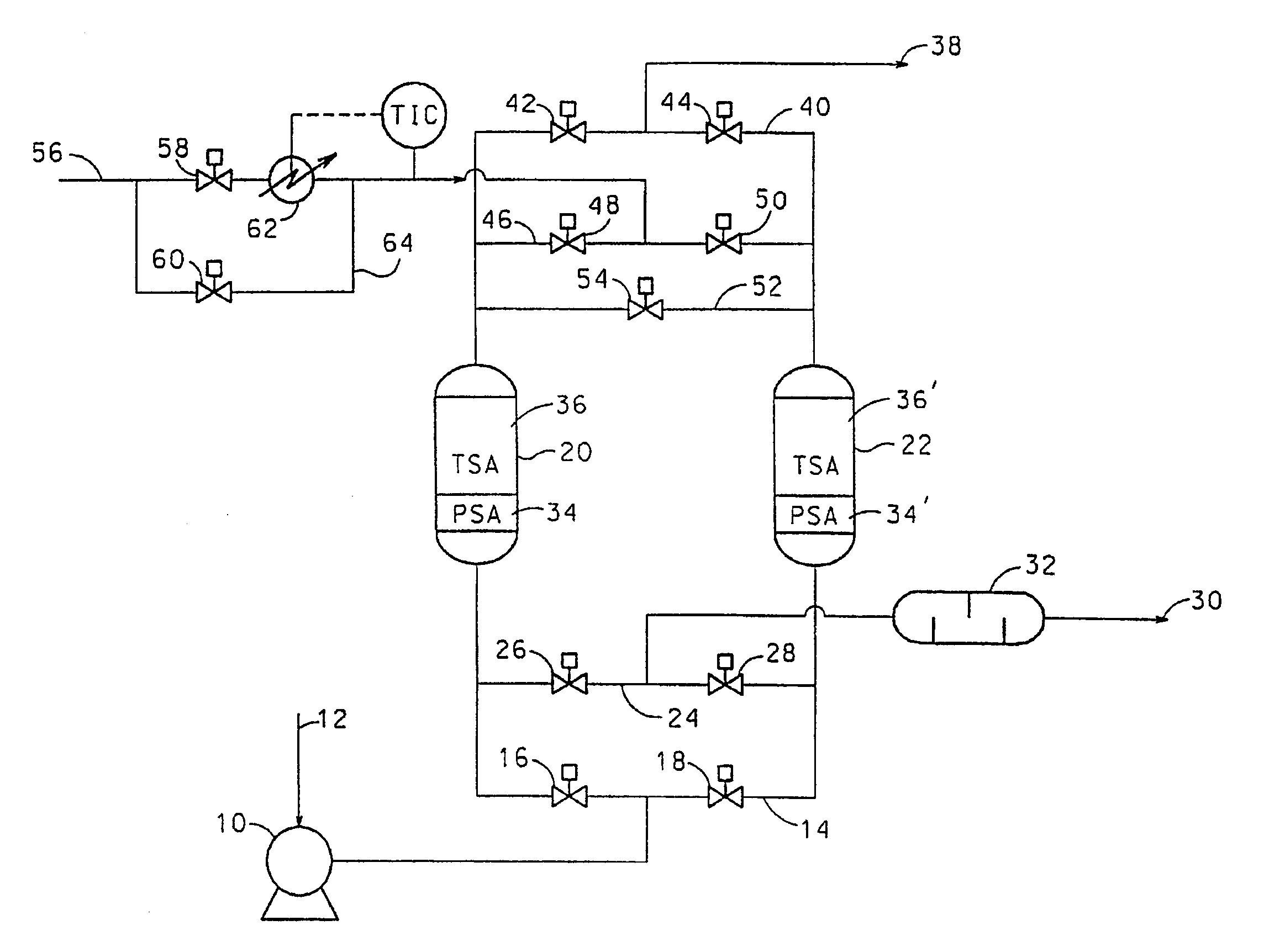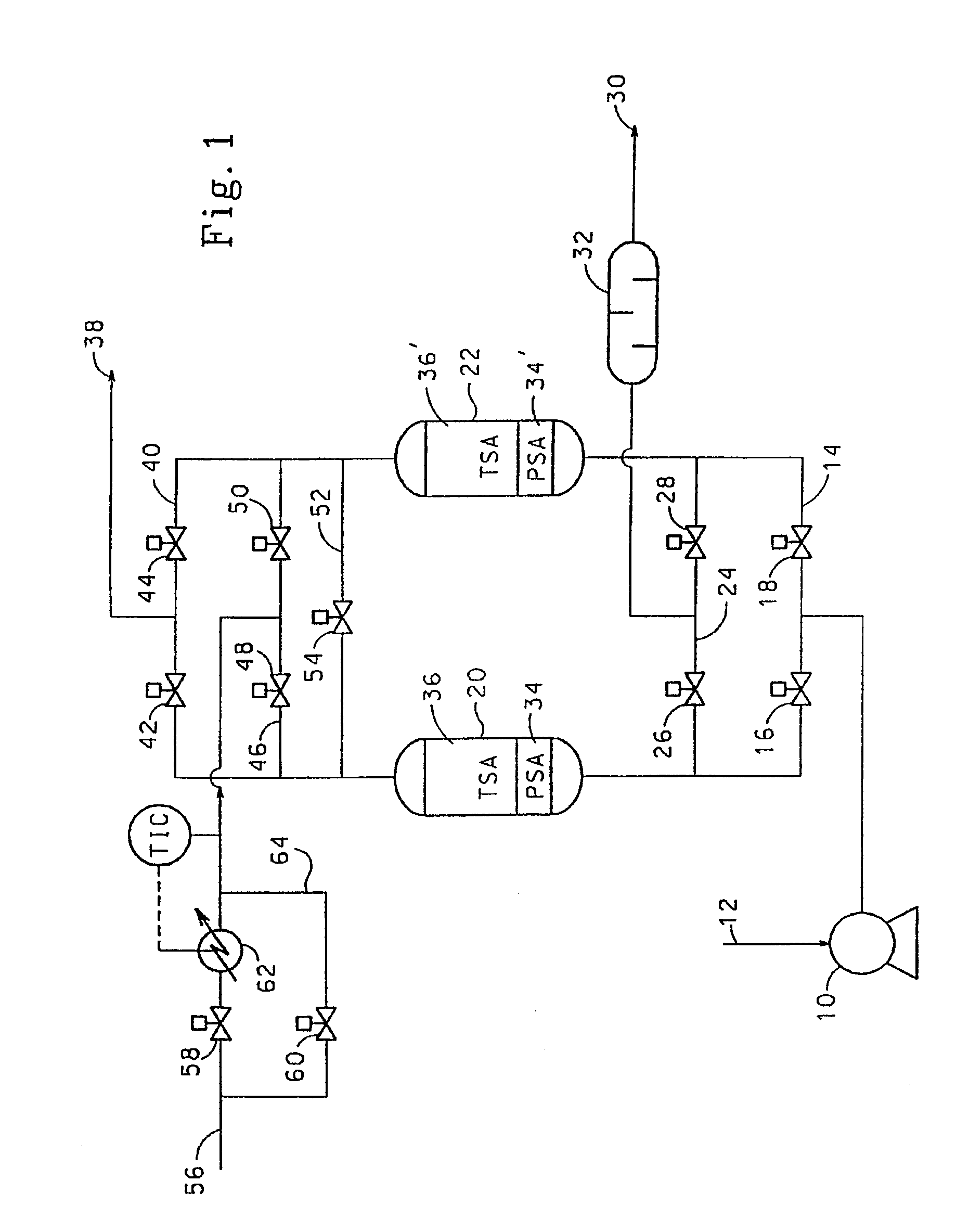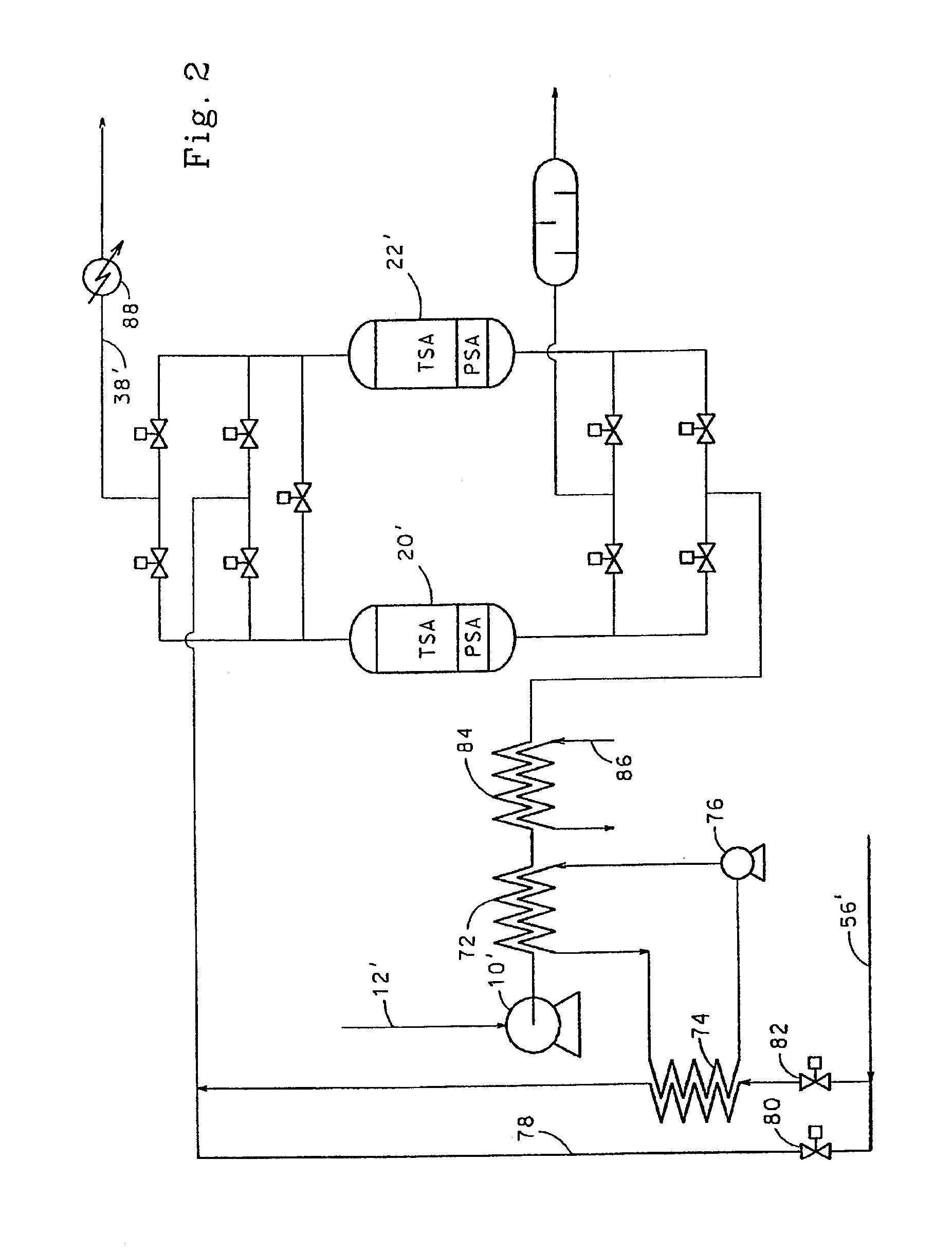Purification of air
a technology of air purification and air, applied in the field of air purification, can solve the problems of water and carbon dioxide freezing out, pressure drop, flow variation and operation problems, and potential explosive hazards
- Summary
- Abstract
- Description
- Claims
- Application Information
AI Technical Summary
Benefits of technology
Problems solved by technology
Method used
Image
Examples
example 4
Optimal Alumina / 13X Bed Layering for Combined Low Temperature Thermal Swing and Pressure Swing Regeneration
[0087]Two bed cyclic experiments for the removal of trace impurities from air were carried out in vessels 0.2 m in diameter. The length of the total adsorbent bed was 2 m. The feed air was saturated with water at feed conditions and contained 380 ppm CO2 and 0.3 ppm N2O. In all cases, the feed end of the adsorbent bed contained activated alumina (Alcan AA-300). Where present, the product end of the bed contained 13X zeolite (Zeochem Z10-02, Si / Al=1.15). The cycle tested is shown in Table 6 below:
[0088]
TABLE 6Feed time35 minHeat time at 70° C.10 minCool time at 36° C.19 minSwitch time (Depressurisation and6 minrepressurisation)Feed temperature36° C.Feed pressure7.3 bara (730 kPa)Purge / air ratio (molar basis)0.45Regeneration pressure1.25 bara (125 kPa)Feed flow rate6.0 kmol / h
[0089]The ratio of alumina to 13X in the adsorbent bed was varied and the average exit CO2 breakthrough le...
example 5
Effect of Zeolite Type
[0093]The effect of zeolite type was investigated in the experimental unit described in Example 4. In place of the 13X zeolite, CaX zeolite (Ceca G586) and 5A zeolite (UOP KEG 410) were used. The CaX zeolite is 86% Ca exchanged X zeolite, and the 5A zeolite is 74% Ca exchanged A zeolite. Comparison experiments were conducted with bed loadings of 75% activated alumina (Alcan AA-300) and 25% zeolite.
[0094]Tests conducted with CaX as the final adsorbent layer were not successful. The average CO2 content in the gas exiting the adsorption vessel never reached the 50 ppb time average target. It appears that CaX adsorbs CO2 too strongly for this application. CaX has, however, been taught in the prior art as the preferred adsorbent for simultaneous CO2 and N2O removal from ambient air in TSA applications where regeneration temperatures in excess of 80° C. are used.
[0095]In example 4, it was shown that when the bed contained 25% 13X zeolite, the level of N2O removal fro...
example 6
Effect of Alumina Type
[0096]The experimental unit described in Example 4 was used, with the experimental conditions given in Table 8 below. In these two tests, the volumetric alumina / 13X layering was kept at 75% alumina / 25% zeolite, and in both cases the 13X zeolite used was Zeochem Z10-02. In one case unimpregnated alumina (Alcan AA-300) was used, and in the other impregnated alumina (Alcan AA-320 with 5 wt % K2CO3) was used. Time averaged CO2 breakthrough level during these tests was 20 ppb.
[0097]
TABLE 8Feed time35 minHeat time at 70° C.10 minCool time at 50° C.15 minSwitch time (depressurisation and10 minrepressurisation)Feed temperature50° C.Feed pressure5.0 bara (500 kPa)Purge / air ratio (molar basis)0.50Regeneration pressure1.25 bara (125 kPa)Feed flow rate3.4 kmol / h
[0098]The results of the testing showed that the bed that contained the K2CO3-impregnated alumina had significantly higher N2O removal than the bed that used the unimpregnated alumina. The bed with the impregnated a...
PUM
| Property | Measurement | Unit |
|---|---|---|
| Henry's Law constant | aaaaa | aaaaa |
| temperature | aaaaa | aaaaa |
| temperature | aaaaa | aaaaa |
Abstract
Description
Claims
Application Information
 Login to View More
Login to View More - R&D
- Intellectual Property
- Life Sciences
- Materials
- Tech Scout
- Unparalleled Data Quality
- Higher Quality Content
- 60% Fewer Hallucinations
Browse by: Latest US Patents, China's latest patents, Technical Efficacy Thesaurus, Application Domain, Technology Topic, Popular Technical Reports.
© 2025 PatSnap. All rights reserved.Legal|Privacy policy|Modern Slavery Act Transparency Statement|Sitemap|About US| Contact US: help@patsnap.com



